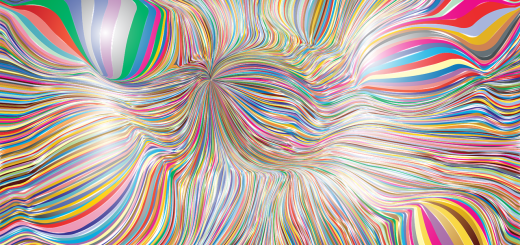Ancient Egyptian Religion: Beliefs and Practices

Before diving in, please note: This post is for informational purposes only. If you’d like to know more about how we approach topics, feel free to check out our friendly Disclaimer Page.
Hey there, amazing readers! 🖐️ Just a quick note: yes, we know there are a lot of ads here. Trust us, we get it—it’s not the prettiest look, but they help us keep this blog alive and kicking. Those pesky little ads cover the costs of all the behind-the-scenes magic, from hosting and tech stuff to creating content we hope you’ll love.
We’re committed to delivering quality posts, and your support (even just sticking around despite the ads) means everything to us. So, bear with us, and thanks for helping us keep the good vibes rolling. Now, on to the fun stuff! 😉
TRANSLATE BUTTON AT THE END OF THE ARTICLE
Introduction to Ancient Egyptian Religion
Ancient Egyptian religion was a complex system of beliefs and practices that were an integral part of everyday life for the people of ancient Egypt.
It encompassed a vast array of gods and goddesses, rituals, and ceremonies that played a significant role in shaping Egyptian society and culture.
The religion of ancient Egypt was polytheistic, meaning that it involved the worship of multiple gods and goddesses who held various powers and responsibilities.
The ancient Egyptians believed that the gods and goddesses controlled every aspect of the natural world, from the rising and setting of the sun to the flooding of the Nile River.
These deities were thought to be immortal and all-powerful beings who could intervene in human affairs and influence the course of events on Earth.
The gods and goddesses were often depicted in human or animal form and were associated with specific qualities or attributes.
For example, the goddess Isis was revered as a symbol of motherhood and fertility, while the god Ra was the sun god and the bringer of light.
Importance of Gods and Goddesses
The gods and goddesses of ancient Egypt played a central role in the religious beliefs and practices of the people.
They were revered as powerful beings who had the ability to grant blessings, protection, and favor to those who worshipped them.
The ancient Egyptians believed that by honoring and appeasing the gods and goddesses through prayers, offerings, and rituals, they could ensure their own well-being and prosperity.
The pantheon of ancient Egyptian deities was vast and diverse, with each god and goddess having a specific domain or sphere of influence.
For example, Osiris was the god of the afterlife and the judge of the dead, while Hathor was the goddess of love, music, and joy.
The gods and goddesses were often worshipped in temples and shrines dedicated to their specific cults, where priests and priestesses would perform rituals and ceremonies on their behalf.
Rituals and Offerings in Worship
Rituals and offerings were essential components of ancient Egyptian religious practice.
The ancient Egyptians believed that by performing rituals and making offerings to the gods and goddesses, they could communicate with the divine and ensure their favor.
Rituals were often elaborate ceremonies that involved prayers, hymns, and symbolic actions performed by priests and worshippers.
Offerings were also an important part of ancient Egyptian worship.
These offerings could include food, drink, incense, and other items that were believed to please the gods and goddesses.
Common offerings included bread, beer, fruits, and vegetables, as well as precious metals and gemstones.
Offerings were typically presented on altars or in temples dedicated to specific deities, where they would be consumed or used in rituals by the priests.
Afterlife Beliefs and Funerary Practices
The ancient Egyptians had a complex belief system concerning the afterlife and the journey of the soul.
They believed that after death, the soul would undergo a series of trials and judgments before reaching the afterlife, where it would be reunited with the body in a state of eternal bliss.
The most important deity associated with the afterlife was Osiris, the god of the dead and ruler of the underworld.
Funerary practices played a vital role in ensuring a smooth passage to the afterlife for the deceased.
The ancient Egyptians believed in the importance of preserving the body through mummification, as they believed that the soul needed a physical form to inhabit in the afterlife.
Elaborate tombs and burial chambers were constructed to house the bodies of the deceased, along with grave goods and offerings to sustain them in the afterlife.
Funerary rituals and ceremonies were also performed to guide the soul on its journey and ensure its safe passage.
Temples and Sacred Sites
Temples were the focal points of ancient Egyptian religious life, serving as the primary locations for worship, rituals, and ceremonies.
These temples were grand, ornate structures dedicated to specific gods and goddesses, each with its own priesthood and cult following.
Temples were often constructed in strategic locations throughout Egypt, such as near the Nile River or in sacred cities like Thebes or Memphis.
Sacred sites were also important in ancient Egyptian religious practice, as they were believed to be locations where the divine intersected with the mortal world.
Sacred sites could include natural landmarks like mountains or rivers, as well as man-made structures like shrines or statues.
These sites were often associated with specific deities or events from Egyptian mythology and were considered to be imbued with spiritual significance.
Role of Priests in Religious Ceremonies
Priests played a crucial role in ancient Egyptian religious ceremonies and rituals, acting as intermediaries between the gods and goddesses and the people.
Priests were responsible for maintaining the temples, performing rituals, and making offerings on behalf of the community.
They were also tasked with interpreting omens, reading signs, and providing guidance to the faithful.
Priests were highly respected members of ancient Egyptian society, often coming from noble or elite families.
They underwent rigorous training and education in the rituals and practices of the religion, as well as in the arts of divination and magic.
Priests were believed to have special powers and abilities granted to them by the gods, allowing them to communicate with the divine and perform miracles on behalf of the people.
Influence of Religion on Daily Life
Religion permeated every aspect of ancient Egyptian daily life, shaping social, political, and cultural practices.
The ancient Egyptians believed that the gods and goddesses were present in all things, from the natural world to human affairs, and as such, they sought to honor and appease the divine through their actions and behaviors.
Religious beliefs influenced everything from marriage customs to agricultural practices, with rituals and ceremonies playing a central role in maintaining harmony and balance in society.
The ancient Egyptians celebrated numerous religious festivals and holidays throughout the year, dedicated to specific gods and goddesses or significant events in Egyptian mythology.
These festivals often involved processions, offerings, music, dance, and feasting, bringing communities together in shared worship and celebration.
Religious beliefs also influenced the arts, architecture, and literature of ancient Egypt, with many works of art and literature depicting scenes from mythology or honoring the gods and goddesses.
Symbolism in Ancient Egyptian Religion
Symbolism played a significant role in ancient Egyptian religion, with many gods, goddesses, and rituals being imbued with symbolic meaning.
Symbols were used to represent divine qualities, cosmic forces, and aspects of the natural world, allowing worshippers to connect with the divine on a deeper level.
Common symbols in ancient Egyptian religion included the ankh, a symbol of life and fertility, the eye of Horus, a symbol of protection and healing, and the scarab beetle, a symbol of rebirth and regeneration.
The ancient Egyptians also used symbols in their art, architecture, and tombs to convey religious beliefs and concepts.
Hieroglyphs, the written language of ancient Egypt, were rich in symbolic meaning, with each symbol representing a word, sound, or idea.
Temples and tombs were adorned with intricate carvings, paintings, and statues that depicted gods, goddesses, and religious scenes, often laden with symbolic significance.
Symbols were used to convey messages, invoke blessings, and ensure protection in both religious and secular contexts.
Relationship Between Pharaohs and Deities
The relationship between the pharaohs of ancient Egypt and the gods and goddesses was a central aspect of Egyptian religious belief.
The pharaoh was seen as a divine ruler, a living embodiment of the gods on Earth, with a direct connection to the divine realm.
Pharaohs were believed to be descendants of the gods, chosen to rule over Egypt and uphold order and balance in society.
Pharaohs played a crucial role in religious ceremonies and rituals, acting as intermediaries between the gods and the people.
They were responsible for making offerings, performing rituals, and ensuring the prosperity and well-being of the nation.
Pharaohs were often depicted in art and literature as being favored by the gods, receiving divine guidance and protection in their rule.
The pharaoh’s relationship with the gods was seen as essential for maintaining Ma’at, the cosmic order and harmony of the universe.
Evolution of Religious Beliefs over Time
The religious beliefs of ancient Egypt evolved and changed over thousands of years, reflecting shifts in political, social, and cultural dynamics.
The early Egyptian religion was animistic, focusing on nature spirits and ancestor worship, before gradually developing into a complex system of gods and goddesses with distinct roles and attributes.
As Egypt came into contact with other civilizations, such as the Greeks and Romans, foreign deities and religious practices were assimilated into Egyptian belief systems.
One of the most significant changes in Egyptian religion occurred during the New Kingdom period, when the worship of the sun god Ra became increasingly prominent.
Ra was equated with the pharaoh as a divine ruler and creator of the universe, leading to the construction of temples and monuments dedicated to his cult.
The worship of Ra reflected a shift towards monotheism, with the sun god being elevated above all other deities in the pantheon.
Comparison with Other Ancient Religions
Ancient Egyptian religion shares some similarities with other ancient religions, such as Mesopotamian, Greek, and Roman religions, while also having unique characteristics that set it apart.
Like many ancient religions, Egyptian religion was polytheistic, with a pantheon of gods and goddesses who controlled various aspects of the natural world.
However, Egyptian religion placed a particular emphasis on the afterlife and the journey of the soul, with elaborate funerary practices and beliefs in resurrection and eternal life.
The worship of animals, particularly sacred animals like the cat or the ibis, was also a unique feature of ancient Egyptian religion.
Animals were believed to be manifestations of the gods and were revered and protected by the people.
In contrast, other ancient religions viewed animals as either symbolic or sacrificial, with less emphasis on their divine significance.
The concept of Ma’at, the cosmic order and balance of the universe, was another distinctive aspect of Egyptian religion, guiding moral and ethical conduct in society.
Legacy of Ancient Egyptian Religion Today
The legacy of ancient Egyptian religion can still be seen and felt in modern society, with echoes of its beliefs and practices present in art, literature, and popular culture.
The symbols, myths, and rituals of ancient Egypt continue to captivate and inspire people around the world, with museums, exhibitions, and documentaries dedicated to preserving and exploring this ancient civilization.
The study of ancient Egyptian religion also continues to influence fields such as archaeology, anthropology, and religious studies, providing insights into the beliefs and practices of one of the world’s oldest civilizations.
In conclusion, ancient Egyptian religion was a rich and complex system of beliefs and practices that shaped the lives of the people of ancient Egypt.
From the worship of gods and goddesses to the performance of rituals and ceremonies, religion played a central role in maintaining order, balance, and harmony in Egyptian society.
The legacy of ancient Egyptian religion continues to endure today, reminding us of the enduring power and influence of this remarkable civilization.

The Enlightenment Journey is a remarkable collection of writings authored by a distinguished group of experts in the fields of spirituality, new age, and esoteric knowledge.
This anthology features a diverse assembly of well-experienced authors who bring their profound insights and credible perspectives to the forefront.
Each contributor possesses a wealth of knowledge and wisdom, making them authorities in their respective domains.
Together, they offer readers a transformative journey into the realms of spiritual growth, self-discovery, and esoteric enlightenment.
The Enlightenment Journey is a testament to the collective expertise of these luminaries, providing readers with a rich tapestry of ideas and information to illuminate their spiritual path.
Our Diverse Expertise 🌟
While our primary focus is on spirituality and esotericism, we are equally passionate about exploring a wide range of other topics and niches 🌍📚. Our experienced team is dedicated to delivering high-quality, informative content across various subjects ✨.
To ensure we provide the most accurate and valuable insights, we collaborate with trusted experts in their respective domains 🧑🏫👩🏫. This allows us to offer well-rounded perspectives and knowledge to our readers.
Our blog originally focused on spirituality and metaphysics, but we’ve since expanded to cover a wide range of niches. Don’t worry—we continue to publish a lot of articles on spirituality! Frequently visit our blog to explore our diverse content and stay tuned for more insightful reads.





